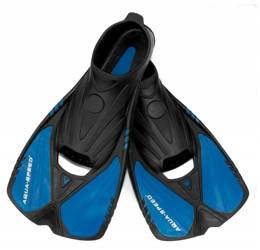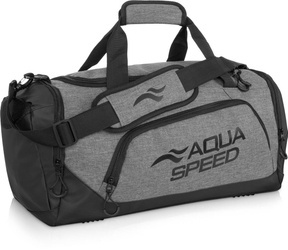Monofin Swimming – Only for Sharks?

Monofin Swimming Might Look Like Playful Mermaiding, but for This Team, Training Is Pure Fire. It’s something you have to learn, but once you catch the bug, it brings a lot of satisfaction and can be the start of an amazing adventure. To begin, all you need are the basics from traditional swim training, a monofin, and experienced coaches like Marian Bigos from the Rekin School Sports Club in Wrocław.
Who Is This Sport For?
Can swimmers, lifeguards, or divers find enjoyment in this discipline?
Marian Bigos: The monofin attracts a wide range of people—from swimmers looking for a new challenge, to lifeguards, and even freedivers aiming to break underwater records. Experienced swimmers tend to do especially well, although they must get used to the unique gear: a large fin worn on both feet and a front-mounted snorkel. Leg work plays a crucial role here, as propulsion is generated by the legs combined with hip motion.


What Monofin Swimming Training Involves
How does the training work, and what does it focus on? What matters more: technique, endurance, strength, or distance?
First and foremost, it all starts with the basics. Whether we’re working with a child or an adult, mastering swimming technique is key. Before we introduce fins, we practice proper body position in the water and leg movement without bending the knees. Only once the swimmer has mastered these skills do we begin training with fins—and then move on to the monofin.
What are the differences between classical swimming and monofin swimming?
The biggest difference is that in classical swimming, propulsion comes mainly from the arms, whereas in monofin swimming, it’s all about the legs and hips. They generate the undulating motion of the whole body, similar to the dolphin stroke. Also, in monofin swimming, we don’t bend the knees—the movement originates from the hips. Another challenge is breathing through a front-mounted snorkel, which requires swimmers to get used to the equipment and adapt their breathing habits.
When to Start Training for a Healthy Experience ?
At what age can someone start practicing this sport, and to what extent?
Honestly—at any age, as long as the approach is right. Both children and adults can begin training, as long as they already know how to swim. School-aged kids tend to pick up new techniques quickly, but it’s also a great option for adults—as long as they’re consistent and patient. Technical preparation is crucial: we need to make sure the swimmer has good body position in the water and proper leg movement before moving on to more advanced exercises.
Is swimming long distances underwater healthy?
Absolutely—if the training is properly structured. It’s essential to gradually build up endurance and learn how to conserve energy. This sport strengthens the leg muscles, improves overall fitness, and teaches breath control. However, like with any intense physical activity, proper supervision is key—especially at the beginning of your monofin journey.


Monofin Swimming Training and Competitions
What does a typical training session for an athlete look like?
It all depends on the distance the athlete is preparing for. For sprinters, strength is key; for long-distance swimmers, it’s all about endurance. We start with technique, then build an aerobic base, and work on speed. For example, an athlete training for a 100-meter race will perform sets at around 80% of their maximum speed, with rest periods no longer than 30 seconds. The most important elements are technique and leg rhythm—the movement must be smooth, controlled, and efficient.
What about competitions? What distances are raced?
The longest monofin distance is 1500 meters, and on shorter distances, such as 100 meters, the world’s best swimmers clock in at under 40 seconds. In Poland, these distances are becoming increasingly popular, though the sport is still considered niche. There are also open water events, where swimmers compete in loops about half a kilometer long.


What Equipment to Choose for Monofin Swimming Training
What do you need to train in monofin swimming? Where can someone start this kind of adventure?
The best way is to join a sports club or work with an experienced instructor. It’s important that the coach has solid knowledge and experience in fin swimming, as the technique is quite different from traditional swimming. The gear—a monofin and a front-mounted snorkel—takes some getting used to, and proper leg movement and breathing technique are essential. It’s also worth exploring places where the sport is more developed, such as freediving clubs.
----
Interview by: Maciej Mazerant / Managing Editor of AQUA SPEED Magazine
Photos: rekin.wroc.pl
Recommended

Centre snorkel Aqua Speed Comet 07 - grey

Short training fins Aqua Speed Action 11 - blue

Quick drying microfiber towelAqua Speed Dry Flat 50x100 cm - 10 navy

Centre snorkel Aqua Speed Comet 11 - blue

Long training fins Fusion 11

Panoramic adult swimming goggles Aqua Speed Tivano 38 - green - clear glasses

Maxpack multifunctional swim backpack 07 42L - black

